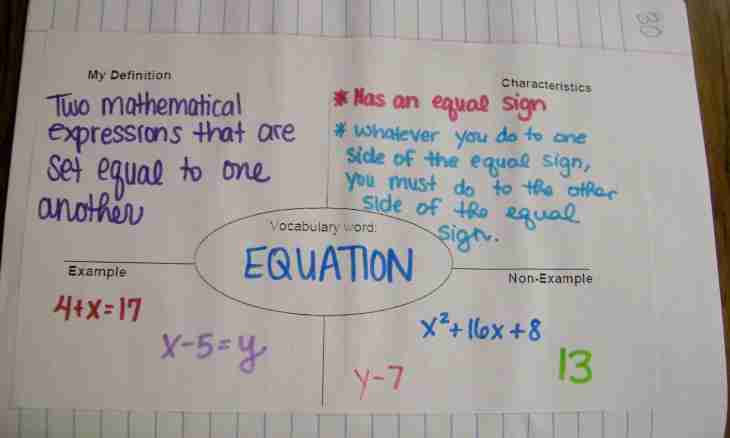Quadratic equation - a special type of examples from the school program. At first sight, they seem rather difficult, however on closer examination it is possible to find out that they have a standard algorithm of the decision.
Quadratic equation - the equality corresponding to a formula ax^2 + bx + c = 0. In this equation x represents a root, that is value of a variable at which equality addresses in true; a, b and c are numerical coefficients. At the same time coefficients of b and c can have any value, including positive, negative and zero; the coefficient of a can be only positive or negative, that is should not be equal to zero.
Search of a discriminant
The solution of the equation of this kind includes several standard steps. Let's consider it on the example of the equation 2x^2 - 8x + 6 = 0. It is originally necessary to find out how many roots the equation has.
For this purpose it is necessary to find value of a so-called discriminant which is calculated on formula D = by b^2 − 4ac. All necessary coefficients need to be taken from initial equality: thus, for the considered case the discriminant will pay off as D = (-8) ^2 - 4*2*6 = 16.
The value of a discriminant can be positive, negative or zero. At positive value of a discriminant the quadratic equation will have two roots, as in this example. At zero value of this indicator the equation will have one root, and at negative value it is possible to draw a conclusion that the equation has no roots, that is such values x at which equality addresses in true.
Solution of the equation
The discriminant is used not only for clarification of a question of quantity of roots, but also in the course of the solution of a quadratic equation. So, the general formula of a root of such equation has an appearance x = (-b ± √ (b^2 - 4ac)) / 2a. In the specified formula it is noticeable that expression under a root actually and represents a discriminant: thus, it can be simplified to x = (-b ± √D) / 2a. From here it becomes clear why the equation of such look has one root at a zero discriminant: strictly speaking, in this case roots will still be two, but they will be equal among themselves. For our example it is necessary to use earlier found value of a discriminant. Thus, the first value x = (8 + 4) / 2*2 = 3, the second value x = (8 - 4)/2*4 = 1. For check it is necessary to substitute the found values in the initial equation, having made sure that in both cases it represents right equality.

